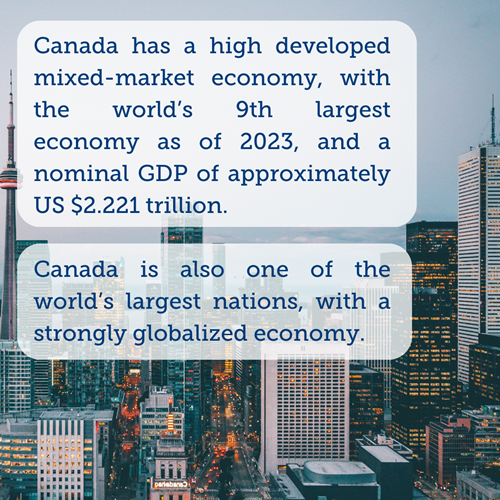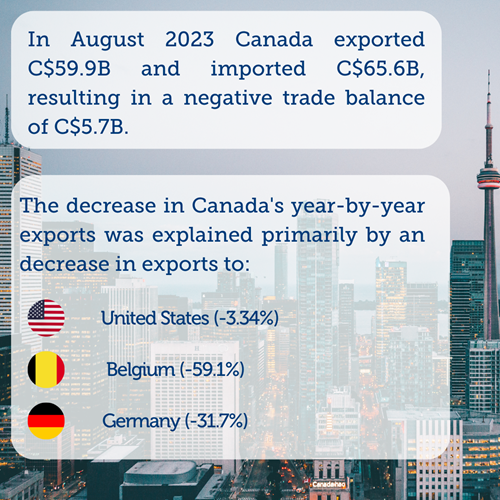Analysis and Studies - Country Analysis
Canada: a look at the market
November 23rd 2023
Canada is a country situated in North America, its ten provinces and three territories extend from Atlantic Ocean to the Pacific Ocean, making it the world’s second largest country by total area.
Furthermore, Canada is a developed country with a high nominal per capita income globally and its advanced economy ranks among the largest in the world. Canada is also identified as a middle power for its role in international affairs, with a tendency to carry out multilateral solutions.
Canada’s neutral party function during the 20th century has had a significant influence on its global image. The country is a part of multiple major international and intergovernmental institutions.
About some curiosity, the name “Canada” is now accepted as coming from the St. Lawrence Iroquoian word “Kanata”, meaning “village” or “settlement”.
A look at the market
What’s more Canada has a high developed mixed-market economy, with the world’s ninth-largest economy as of 2023, and a nominal GDP of approximately US $ 2.221 trillion. It’s also one of the world’s largest trading nations, with a strongly globalized economy. Canadian trade in goods and services got to $2.016 trillion in 2021.

About exports, Canada totaled over $637 billion, while its imported goods were worth over $631 billion originated from United States.
Nevertheless, in 2018 Canada has a trade deficit in goods of $22 billion and a trade deficit in services of $25 billion.
On top Canada has a strong cooperative banking sector, with the world’s highest per-capita membership in credit unions.,
Since the early 20th century, the growth of Canada’s manufacturing and services sectors has remodeled the nation from a rural economy to an urbanized and industrial one. The Canadian economy is in command of service industry, with employs about three-quarters of the country’s workforce.
Furthermore, Canada has an usually crucial primary sector, where forestry and petroleum industries are the most prominent components.
For good measure, the county is one of the few prospered nations that are net exporters of energy. Canada is likewise one of the world’s largest suppliers of agricultural products, such as wheat, canola and other grains.
On the other hand, the country is a leading exporter of zinc, uranium, gold, nickel aluminum, coking coal, cobalt and cadmium. It has a producing sector centered in southern Ontario and Quebec, with automobiles and aeronautics standing for influential industries. A chief contributor to the economy of Canada is also the fishing industry.

About latest Trends, In August 2023 Canada exported $59.9 billion and imported $65.6 billion, marks in a negative trade balance of $5.7 billion. Between August 2022 and August 2023 the exports of Canada have downsized by $-3.0 billion (-4.89%), while imports phase down by $-1.02 billion (-1.53%). In August 2023, the main destinations were United States with exports valued at $47.7 billion, China with $2.06 billion, Japan, whose exports value at $1.39 billion , United Kingdom with $1.18 billion, and Mexico with exports value at $730 million; and imported mostly from United States ($33.1 billion), China ($7.83 billion), Mexico ($3.7 billion), Germany ($2.07 billion), and Japan ($1.68 billion).
Fonti:
https://oec.world/en
https://data.worldbank.org/
https://www.trademap.org/
